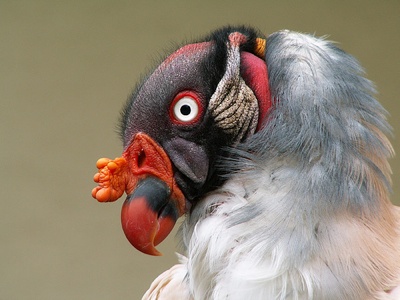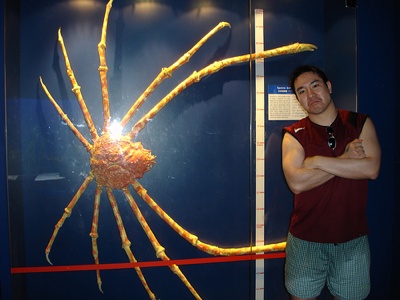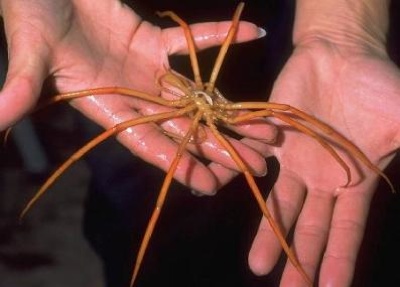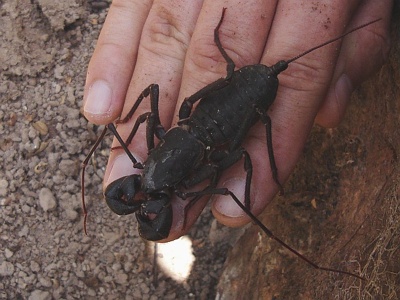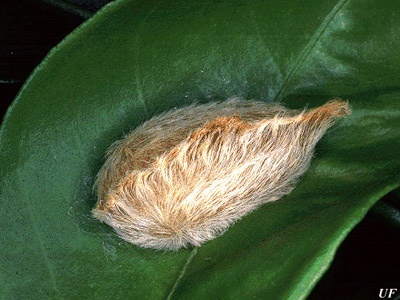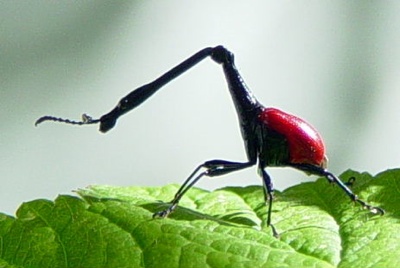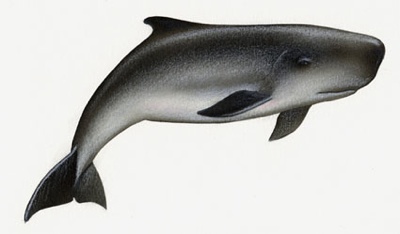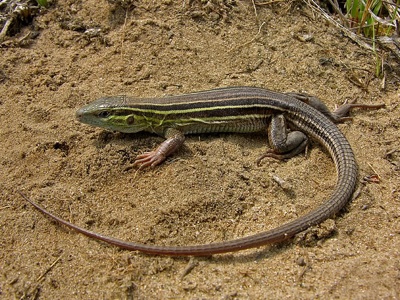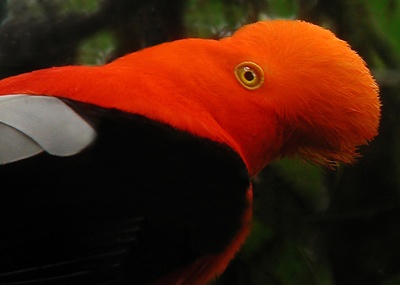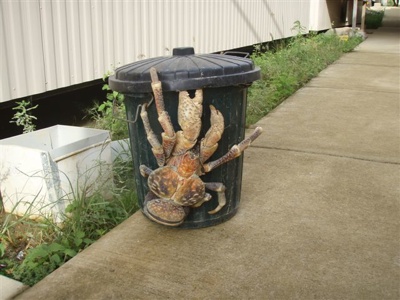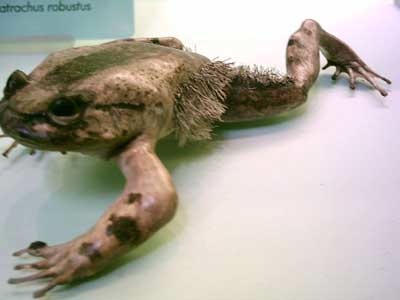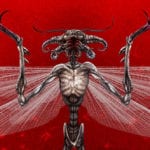Vultures are usually seen as dull, ugly, black birds. The King Vulture, however, is a colorful creature. Its body is white on the top and black on the bottom, while its head is covered with colors ranging from red, orange and yellow to blue and purple. It also has a wattle on its head. They do not have a voice box, but they still can make low noises. According to Mayan mythology, these birds were the messengers of the gods. And when you look at one, you can see why. [Image Source]
The largest living Arthropod, this huge crab has legs that can reach up to 4 meters (13 feet) in length and 20 kilograms (44 pounds) in weight! They are also said to live up to a hundred years. Enjoy your nightmares! [Image Source]
These spider-like creatures live in various depths of marine bodies. Their most notable characteristic, other than their habitat, is their huge legs (at least compared to their bodies). They have no respiratory system: instead, they use diffusion to survive. The largest of these belong to the Colossendeis colossea species.
These frightening Arachnids have large pedipalps (pincers) and a “whip” at the end of their abdomen. More notably, these creatures can spray various chemicals from their abdomen, including formic acid (CH2O2), chlorine, and a mixture of acetic acid (C2H4O2) and octanoic acid (C8H16O2), depending on the species. The last spray has a vinegar-like smell, hence their alternate name, “Vinegarroons”. Similar creatures include Whip Spiders (also known as Tailess Whip Scorpions) and Micro Whip Scorpions.
As their name states, these African fish are often found swimming upside-down. It is thought they do this so they can reach food on the water’s surface, such as insect eggs. Their coloration is also reversed: unlike most fish, their belly is darker than their top. This is to give them camouflage from predators from above. They are popular aquarium fish and might be available at your local pet shop.
These tiny, caterpillar-like creatures are some of the most amazin creatures in existence. They can live practically anywhere, from hot springs to arctic regions. More amazingly, these things can enter a cryonic state that makes them almost impervious to environmental hazards. They can briefly survive temperatures of over 150 degrees Celsius as well as near-absolute zero temperatures. They can withstand massive pressures, radiation, and even the deadly vacuum of space. Their metabolism also grinds to a near halt. They are most frequently found on mosses, lichens, and other damp places.
Not all butterflies and moths drink nectar! The vampire moth literally drinks blood! It uses its proboscis to pierce the skin of its target and drink the creature’s blood. And yes, they occasionally bite humans! Fortunately, they do not cause any known diseases. Only the males bite.
These moths are very furry, especially as a caterpillar. Known by several names, such as the pussy moth/puss caterpillar, the southern flannel moth, and the asp caterpillar, this moth is said to look like a Persian cat as a caterpillar. They may look “pettable” as a caterpillar, but do NOT touch it! Like many caterpillars, these insects have a defense mechanism: those hairs are actually venomous spines. Touching one will not kill you, but it will HURT and cause a rash! First-aid is recommended if you accidentally make contact with one of these caterpillars. It uses its fur as its cocoon.
As you might expect, these weevils have a long, slender neck (only the males have this long neck, though). These long necks help the weevils in building nests. They are also quite colorful, being mostly black with a red body.
The Sperm Whale is a mighty creature. It is the largest of the tooth whales, dives to incredible depths, and is known to eat massive squids. However, this species is the smallest known whale. It is not much bigger than a human adult in length. This creature can also expel a reddish substance to ward off predators (which can also be done by a similar species, the Pygmy Sperm Whale).
These lizards might look normal on the outside, but on closer investigation, a surprising fact is revealed: some species, such as the New Mexico Whiptail, consist entirely of females. They undergo Parthenogenesis, which is embryo fertilization without a male, to produce new offspring. Despite this, however, these lizards still “mate” to increase fertility.
The females of this species of bird are normal enough, but the males have an odd crest that looks like a large, red/orange bulge. Its feathers consist of reds/oranges in the front, black near the bottom, and a bit of grey. They are national bird of Peru.
The largest living arthropod to dwell on land (weighing up to 4.1 kilograms (9 pounds)), this hermit crab is known to climb trees and eat coconuts. Unlike other hermit crabs, only the juveniles wear shells. The older youngsters often wear coconut shells. They come in a variety of colors, such as orange and blue. They are rumored to steal shiny objects.
This African frog gets its name from the hair-like structure found on the sides of males. These hairs are used to increase the rate that the frog absorbs oxygen, since the males spend long periods of time guarding their eggs. Another impressive fact about these frogs is that they have retractable claws made of bone (as opposed to keratin). However, to get these claws out, the frog must break a bone nodule first. Ouch!
Although this fish’s existence has been known for quite some time, it was only this year that scientists fully understood how bizarre it is. These fish have a mostly black body with a transparent head (which was unheard of until recently, since it always shattered while the fish was being brought up to the surface). Although it has two indentions in the front of its head, those are NOT its eyes: its eyes are the green spheres in its transparent head. These eyes can be used to look above for food or look forward when it is stalking its prey.
